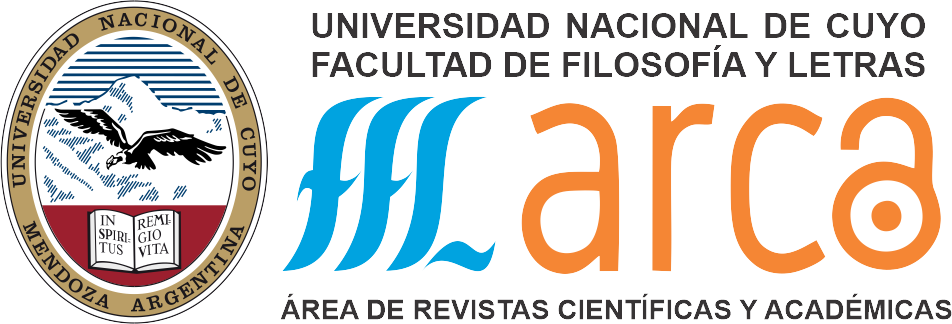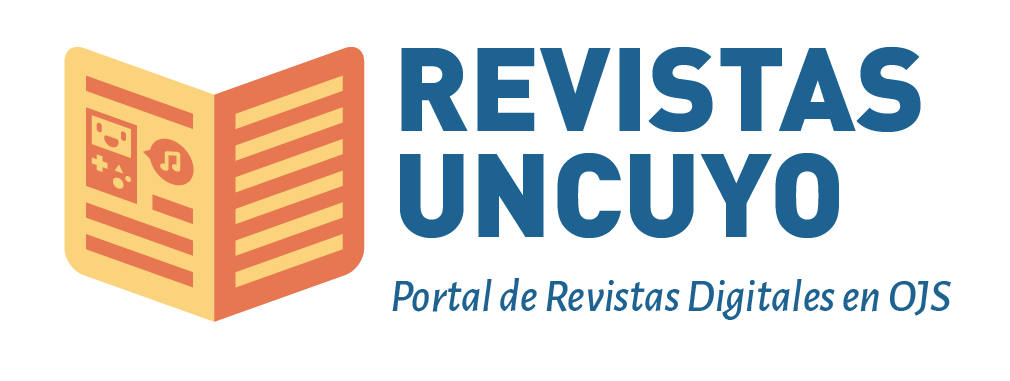-
38903
-
696
-
657
-
519
-
371
Submissions
Submission Preparation Checklist
As part of the submission process, authors are required to check off their submission's compliance with all of the following items, and submissions may be returned to authors that do not adhere to these guidelines.Author Guidelines
1. Introduction / About Estudios Sociales Contemporáneos
Estudios Sociales Contemporáneos is a scientific journal founded by the Instituto Multidisciplinario de Estudios Sociales Contemporáneos (IMESC). It digitally publishes original contributions of inter- and multi-disciplinary scientific, theoretical, methodological and applied research in the field of social science.
The journal Estudios Sociales Contemporáneos aims to:
1. Encourage academic production in subjects related to the social sciences.
2. Promote and disseminate critical analysis as well as the interpretation and creation of alternative proposals to address and confront problems in society, past and present.
3. Stimulate interdisciplinary work through the treatment and focus of published articles.
4. Develop a Latin American perspective on issues within the framework of globalization.
The journal Estudios Sociales Contemporáneos is aimed at academics and researchers in the social sciences who are interested in socio-productive, political, territorial, and historical issues, undergraduate and graduate students, governments and officials, non-governmental organizations, consultants, and communities and individuals interested in the current production of social sciences, in various fields, in Latin America.
The journal is published twice a year (in June and December) by the IMSEC, which is the Mendoza node in the network of executive units of the Consejo Nacional de Investigaciones Científicas y Técnicas (CONICET), Argentina, and the Instituto de Estudios Históricos, Económicos, Sociales e Internacionales (IDEHESI). It does not receive funding from any external organization, nor does it charge authors for processing their articles. It does receive assistance and advice from the Área de Revistas Científicas y Académicas, Facultad de Filosofía y Letras (FFyL) and the Sistema Integrado de Documentación at the Universidad Nacional de Cuyo (UNCuyo), which administers the university’s online repository.
1.1 Open Access Policy
This journal is licensed under a Creative Commons Attribution-Noncommercial-ShareAlike 3.0 Unported License. It provides immediate and free access to its content under the principle of making research freely available to the public and supporting a greater exchange of global knowledge.
2. Editorial Board
The journal is edited by the IMSEC and the IDEHESI at the FFyL of the UNCuyo, Mendoza, Argentina. Estudios Sociales Contemporáneos has an editorial board with the following structure: a Scientific–Academic Committee, an Editorial Committee and an Editorial Team that includes the Editor-in-Chief, an Associate Editor, a Secretary, an Editorial Assistant, an Editorial Advisory Board, and a Designer. Additionally, a technical team is constituted for each issue, made up of a rotating Dossier Coordinator for each issue and the necessary reviewers, according to the articles to be evaluated and the needs of the evaluation process.
The journal Estudios Sociales Contemporáneos is included in the European Reference Index for the Humanities and the Social Sciences (ERIH PLUS) for scientific journals. It is also in the Latindex Catalog 1.0 (Online Regional Information System for Scientific Journals from Latin America, the Caribbean, Spain and Portugal).
3. Evaluation Process
The Editorial Board, with the support of the Scientific-Academic Committee that is made up of internationally renowned specialists, approves the articles and evaluations, which go through a double-blind review process.
The review process by academic peers (specialists) is anonymous and is based on the double-blind criterion of two referees evaluating each article after the pre-selection referred to in the previous paragraph. The Editorial Team, led by the journal’s Editor-in-Chief and its Associate Editor, reserves the right to not send articles for peer review that do not comply with all the guidelines in the journal’s publication instructions. The acceptance of an article for publication requires a favorable decision of both referees, whose collaboration with the journal is governed by the rules of evaluation. If one of the two referees does not consider an article publishable, it will be sent to a third referee, who will cast the deciding vote. The Editorial Team, represented by the Secretary or Editorial Assistant, will notify the author of result of the evaluations in a timely manner, and if favorable, the Editorial Committee will proceed to process the text for publication. If the article is rejected, the author will be notified of the reasons for this. If the referees consider that the article requires changes, the Editorial Team will present the author with these suggestions as well as the deadlines. Until the two most recent issues, the journal rejected 32% of the manuscripts submitted for publication.
The Editorial Board makes the final decision on the APPROVAL of the articles for each issue on a case-by-case basis, based on the result of the reviewers’ evaluations, strict compliance with all the instructions presented here, relevance of the article to the issue’s or journal’s subject area, as well as the overall combination of factors.
The opinions expressed in the articles are the exclusive responsibility of the authors and do not necessarily reflect the point of view of the members of the Editorial Committee, the Scientific-Academic Committee, IMESC, the Instituto de Estudios Históricos, Económicos, Sociales e Internacionales (IDEHESI), or UNCuyo.
The journal reserves the rights, on a royalty-free non-exclusive basis, for the maximum legal period and with universal scope, to distribute and publicly communicate articles, including the right to make them available electronically, as described in the Law of Intellectual Property. For this reason, the journal requests that authors sign a Letter Declaring Originality and Transfer of Publication Rights, which cedes the rights of dissemination to the journal (a model letter is available on the Institute’s website) and assures that the article has not been previously published in any printed or electronic form.
As for the estimated times of evaluation and publication, the journal prepares dossiers two years in advance, so the submission of an article to a dossier can take up to 17 months from submission to final publication. The regular sections for articles and reviews has considerably faster turn-around time, no more than 7 months on average.
However, for the time between article submission and notification of a decision, the Editorial Team aims for 60 days, with an average of 75 days for its latest issues. The minimum time was 21 days and the maximum was 165 days, for articles that required up to two revisions by the author.
4. Types of articles
Published articles will follow one of the following types:
1. Article: open topics (permanent call for papers) and grouped in a dossier. First, the article must deal with a relevant topic in a field of knowledge addressed by the journal, constitute a contribution, and be supported by original, partial, or final research results. The second type is a collaborative dossier focused on a specific problem of interest to the journal, which is convened in a timely manner. In both cases, articles are submitted for review by academic peers.
2. Bibliographic reviews present an objective exposition of the content of an article or book published in relation to topics in a field of knowledge covered by the journal and makes an explicitly critical analysis. This type of article can be requested by the journal’s editorial team and, if not, it evaluates and decides on publication reviews.
3. Foreign language collaborations: papers written in English, French, Italian, and Portuguese are accepted, and will be evaluated and selected under the same parameters as those submitted in Spanish. They will be published in the original language with abstracts in the original language as well as Spanish and English.
5. Guidelines for submissions
In order to guarantee the quality of the articles published in both media types, they must be submitted to the journal and follow these guidelines:
1. Originality. The document must be original, unpublished work and not sent to any other publisher. Once it has been received by the journal, it cannot be withdrawn from the process or sent to other publishers. The text must be sent in a Word file and written in Spanish, English, Portuguese, Italian, or French. It is recommended that authors carefully check spelling and punctuation and avoid typographical errors.
Additionally, the author must attach, in a separate PDF file, the Letter Declaring Originality and Transfer of Publication Rights. This letter must contain the following: "I/We [name the author or authors], declare that the article (or review) [title of the article] presents original results, that it has not been published nor is being considered for publication in another journal, and it conforms to international ethical standards of intellectual property and authorship. Additionally, I/we transfer the rights of reproduction, distribution, and public communication of the article to the Instituto Multidisciplinario de Estudios Sociales Contemporáneos, including the right to make it available electronically, on a royalty-free non-exclusive basis, for the maximum legal period and with universal scope, so that all users of the repository may use the article freely and without fee, as described in the Law of Intellectual Property".
In order to guarantee the veracity of the information, the journal requests authors include an electronic or scanned signature and the national identification numbers of each of the authors.
To be considered RECEIVED, the article will be submitted to review given that it strictly complies with these requirements and including the limit on length, after which the author(s) will be informed.
2. Tables, Figures, and Graphics. Apart from the text, there will only be tables, figures and graphics. These will be strictly necessary and must be self-explanatory (without having to refer to the text to be understood); they must not include abbreviations and they must indicate the units of measurement and complete source information.
Tables and graphics must be adequately synthesized. Each should have a header with the term Table or Graphic with the title on the following line, both in lower case. At the end, the source of the information should be indicated; if it is your own, it should say: made by the author(s). The title and source should be placed outside the main box. The format should be an Excel spreadsheet. They should be numbered consecutively with Arabic numerals. They should always be explicitly referenced to in the text (Table 1).
Diagrams, maps, and photographs are referred to as figures. Each figure should have a header with the term Figure and the title on the following line, both in lower case. The source of the information should be indicated at the end; if the photograph is the author’s, this should be indicated. The title and source should be located outside the main box. The format must be JPG, in grayscale, and have a minimum resolution of 300 DPI. Figures should be numbered consecutively with Arabic numerals. They should be explicitly referenced in the text (Figure 1).
Articles that do not comply with these guidelines will not be accepted.
Tables, figures, and graphics must be included in the text of the article and also sent separately in the format indicated (Excel or JPG), with the title and source. It should be known that the journal is published in full color.
3. Length. Papers should be no longer than 10,000 words in length. Bibliographic reviews have a maximum length of 1,500 words. The text must be written in Word with letter page size, lower and upper margins of 2.5 cm, left and right margins of 3 cm, Times New Roman font, 12-point size, 1.5 line spacing, and no additional spacing. Headings and subheadings must be numbered hierarchically and pages must be numbered.
4. Title. This must be brief – maximum eight words, may have a shorter subtitle, and an English translation must be included. For articles in Spanish, a translation of the title into English must be included under the title. For articles in English, there must be a translation of the title in Spanish. For articles in other languages, there must be translations in both Spanish and English.
A footnote should indicate the basis for the article (funded research, thesis, etc.)
5. Keywords. Three to five descriptors should be included, separated by commas in hierarchical order, indicating the thematic orientation of the article and preferably not repeat words in the title. For articles in Spanish, a translation of the keywords in English must be included under the heading Keywords. For articles in English, there must be a Spanish translation of the keywords. For articles in other languages, the translation must be in both Spanish and English.
6. Information about the author(s). Neither in the name or the properties of the files should there be ANY reference to the identity of the author(s) or their affiliation(s). This is needed to implement the double-blind system, which consists of preserving anonymity between the author(s) and referees, and between referees, in order to avoid possible biases in the evaluation. Author information should be sent as a separate Word file in the format of an academic summary, with a maximum of 80 words, which will be included in the publication. It should contain: full name, e-mail address, telephone numbers, center or department to which the author belongs, postal address, city, and country.
7. Article abstract. At the beginning of the text there should be a summary of its content of less than 200 words, with no footnotes. If the article is in Spanish, the abstract must be written in Spanish and English. Articles in other languages must be accompanied by an abstract in the original language, Spanish, and English. It is recommended that the following aspects be included in the abstract: the question that is answered in the article, the framework or theoretical perspective, the methodology, the main findings, conclusions, and relevance.
8. Footnotes. These must be essential. They are ONLY for clarification, comments, and additions. They are numbered consecutively and are placed at the end of each page. Bibliographic notes should not be included, since they are included in the text in the APA citation style.
9. In-text citation. Citations should be inserted in the text in a simplified manner following APA standards: (author(s) last name(s), year of publication: page). The indication of the page is optional except in the case of textual quotations, which, if less than 40 words long, are included in the paragraph between quotation marks. If a quotation is longer than 40 words, it must be formatted as a separate paragraph, indented, in a smaller size, and without quotes.
10. Bibliographic references. Only publications that are cited in the text should be included and they should appear in full at the end of the article, ordered alphabetically by author and, for the same author, in chronological order, from oldest to most recent. In the case of publications by the same author and year, letters in alphabetical order should be used next to the date to differentiate them, both within the text and in the references. Bibliographic references should follow the APA (American Psychological Association) format, as in the following examples.
Cited references are presented at the end of each paper, with a maximum of 25 references formatted according to APA standards.
10.1. Book:
BOURDIEU, P. (2002). Las estructuras sociales de la economía. Buenos Aires: Manantial.
RAPOPORT, M. and collaborators (2007). Historia económica, política y social de la Argentina (18802003). Buenos Aires: Ediciones Emecé.
10.2. Book chapter:
LEVITT, P. (2010). "Más allá de los estereotipos: desafíos en torno al estudio de las familias migrantes". In: Familias, niños, niñas y jóvenes migrantes. Rompiendo estereotipos. Madrid: Grupo Interdisciplinario de investigadoras migrantes, IEPALA.
10.3. Journal article:
SARAVÍ, Gonzalo (2004). "Segregación urbana y espacio público: los jóvenes en enclaves de pobreza estructural". In: Revista CEPAL (83), 33-48.
10.4. World Wide Web (www) and electronic texts:
PIÑERO, F. J. (2004). El modo de desarrollo industrial Fordista-Keynesiano: Características, Crisis y reestructuración del capitalismo. In: Contribuciones a la economía. Revista Académica Virtual. Accessed at: http://www.eumed.net/ce/2004/fjp-ford.pdf
For more information on the APA format, see the following page:
http://www.docstyles.com/apalite.htm#Top (point 6: Citations & References).
11. Abbreviations, Acronyms, or Initials. These should be listed after the bibliography.
12. All required documentation (text of the article, graphics, tables, author’s academic summary, Letter Declaring Originality and Transfer of Publication Rights) can only be submitted through the journal’s OJS site, following the proper format.
Estudios Sociales Contemporáneos uses OJS version 3.1, so before submitting, you must first register as an author on the following page: http://revistas.uncu.edu.ar/ojs3/index.php/estudiosocontemp/index.
After registering, when you log in, you will be taken to your control panel. To start a new submission, click on the New Submission button on the right side of the screen. You will be asked to start Step One of a five-step process to upload and describe your submission. We suggest you read this page carefully in order to have all necessary documentation ready before starting a new submission: https://docs.pkp.sfu.ca/learning-ojs/es/authoring
For questions or queries, please send a message to the journal’s e-mail address or the Associate Editor (e-contemporaneos@uncu.edu.ar / josejofre@conicet.gov.ar).
13. Responsibility of the authors. Submitted articles must be completely finished. However, prior to publication, the text will be subject to proofreading that does not affect its content. The conscious inclusion of fraudulent or inaccurate data is unethical and will result in an automatic rejection of the article.
6. How to cite an article in the journal Estudios Sociales Contemporáneos
Last name and initials of the author(s) and year of publication. Title of the article. Contemporary Social Studies IMESC, issue number, first and last pages of the article.
7. Code of Ethics
This code publicly acknowledges the ethical commitment of all parties involved in the process of the intellectual production of Estudios Sociales Contemporáneos, that is, the authors, the reviewers, and the institution, represented by the Associate Editor and the Editorial Board.
This code was based on the Best Practice Guidelines for Journal Editors http://publicationethics.org/files/u2/Best_Practice.pdf, from the internationally recognized Committee on Publication Ethics (COPE).
7.1 Responsibilities of the editors
1. Decision on the publication of articles. The Publishing Institution is responsible for the process of deciding which manuscripts sent to the journal will be published. This process will follow the journal’s publishing guidelines and will consult the members of the Editorial Board when making this decision. Manuscripts will be evaluated solely on their intellectual merit and originality, regardless of the author’s race, gender, sexual orientation, religious beliefs, ethnic group, citizenship, institutional affiliation, or political affiliation.
2. Confidentiality. Neither the Associate Editor nor any other member of the Editorial Board will provide information about manuscripts to any individual or institution other than the corresponding author(s), referees, potential referees, other members of the Editorial Board, or the institution itself.
3. Conflicts of interest. During the publication process, the information in the unpublished manuscript will not be used for any purpose by anyone who has access to the manuscript, unless they have express permission from the author.
4. Plagiarism. The Associate Editor, supported by the Editorial Committee, will use free software tools to detect plagiarism prior to sending manuscripts for review by referees. The tool is Viper Plagiarism Checker, which offers a fast and efficient means of detecting plagiarism.
7.2 Responsibilities of the referees
1. Evaluation. The evaluation process consists of assisting the Editorial Team in making decisions as well as assisting authors in improving the quality of their manuscripts. Referees who do not feel qualified to review a manuscript or feel unable to offer a timely review of the manuscript must notify the editor and excuse themselves from the review and evaluation process. The time allotted to the reviewer is 20 calendar days from the reception of the manuscript to be evaluated and the evaluation form.
2. Confidentiality. The information and ideas made available as a result of the privilege of reviewing a manuscript must be kept confidential and not used for personal gain.
3. Objectivity guidelines. Reviews should be conducted in an objective and impartial manner. They should not contain any personal criticism of the authors. Reviewers must clearly express opinions, comments, or observations that are relevant to the manuscript as well as make their rationale explicit.
4. Acknowledgement of sources. Referees are responsible for identifying relevant publications that have not been cited by the authors. Any statement that has been noted in a previous publication or article must be accompanied by a proper citation. The referee must also tell the editor whether the manuscript has any overall similarities with other works he or she is aware of.
5. Conflict of interest. Referees should not review manuscripts for which there are conflicts of interest arising from competitive or co-authorship relationships or from any other type of relationship with the authors or institutions connected to the manuscript.
7.3 Responsibilities of the authors
1. Data access. Authors must be willing to provide public access to the original data of their research. They must also be prepared to allow access to such data even after the manuscript has been published.
2. Originality and plagiarism. Submitting a manuscript for publication assumes that it is completely original and the author declares this under oath in the Letter Declaring Originality and Transfer of Publication Rights. Direct quotations from publications by the author or others must be explicitly cited in the text following the appropriate format for citations and in the bibliography. The reproduction of the work of others, presented as one’s own, is a serious intellectual and moral transgression that will be considered plagiarism.
3. Duplicate publications. In general, the author should not send manuscripts that deal with essentially the same subject and with the same focus to more than one journal or similar publisher. Sending the same manuscript to more than one journal is a dishonest practice and is therefore unacceptable.
4. Recognition of sources of information. In all cases the author must explicitly acknowledge the work of others and cite publications that have been influential during research.
5. Authorship of the manuscript. Authorship is limited to those who have contributed substantially to the planning, outlining, realization, or interpretation of the research. Those who have contributed in this way should be listed as co-authors. The collaboration of other individuals who have contributed in other ways should also be recognized.
6. Correspondence. One of the authors should be responsible for communication with the journal. He or she should ensure that all co-authors are included in the "author information" document and that no inappropriate individuals are listed as co-authors. Finally, he or she must ensure that all co-authors agree to the publication of the final version of the manuscript.
7. Acknowledgement of funding sources. Sources of funding for the research reported in the article should be acknowledged.
8. Conflict of interest. Authors should also make explicit any other personal sources of funding that may be involved in the interpretation of the data or the discussion of the manuscript. All sources of funding for the project must be named.
9. Significant errors in the manuscript. When authors find serious errors in their research, it is their obligation to notify the editor as soon as possible and assist the editor in rectifying the error.
Notas de investigación
Escribir la política de la sección
Copyright Notice
Consultar aquí.
Privacy Statement
Los nombres y las direcciones de correo electrónico introducidos en esta revista se usarán exclusivamente para los fines establecidos en ella y no se proporcionarán a terceros o para su uso con otros fines.























